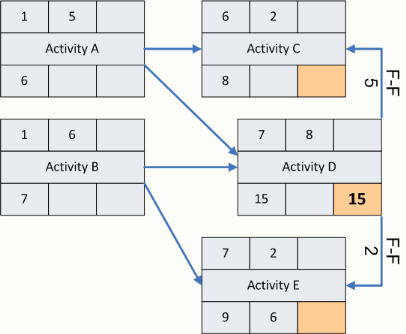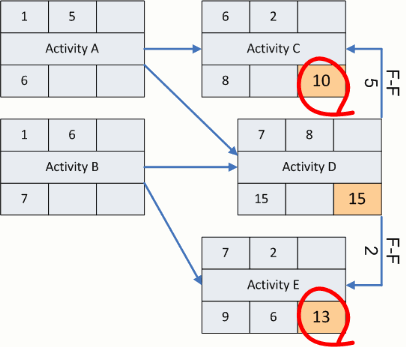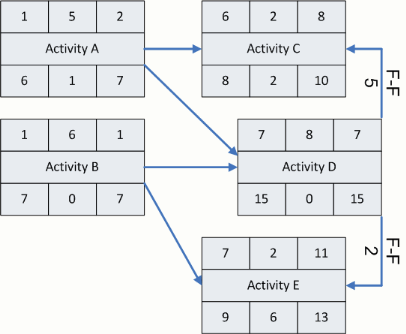finish to finish logic
In the Precedence Diagram we have seen that the sequence between activities is explicitly represented. The standard sequence where one activity precedes another is called Finish-to-Start. Finish-to-Start sequence has an impact on the schedule calculation during both the forward and backward passes. The sequence where one activity starts some time after the start of the prior activity is called Start-to-Start. The Start-to-Start sequence has it’s impact on the forward pass calculations.
In the backward pass there is another type of sequence that is complementary to the Start-to-Start sequence. This new sequence is called the “Finish-to-Finish” sequence. Finish-to-Finish can be thought of as linking the completion of two activities such that the completion of the prior activity takes place a few days before the completion of the second activity.
Consider a three activity project where a trench is cut, a pipe is laid, and the trench is back-filled. We have shown how these activities could be connected using a Start-to-Start sequence. They should also be connected through the Finish-to- Finish sequence such completion of the pipe installation cannot occur until some time after the completion of the trenching activity. Similarly, the pipe must all be installed prior to the completion of the backfill activity. The time delay between the completion of the prior activity and the completion of the following activity associated with Finish-to-Finish sequence is called the “lag.”
The example schedule below shows the calculation of Finish-to-Finish sequence with multiple prior activities. As noted previously, when conducting the backward pass the latest of the incoming Late Start Times is used as the Late Finish Time of the prior activity.

The figure below shows the impact of the Finish-to-Finish logic on the calculation of the two prior activities, Activity C and Activity E. In each case the Late Finish Time of the activity is the Late Finish Time of the prior activity, less the lag duration.

The figure below completes the remainder of the schedule calculations and includes the total float for each activity.
